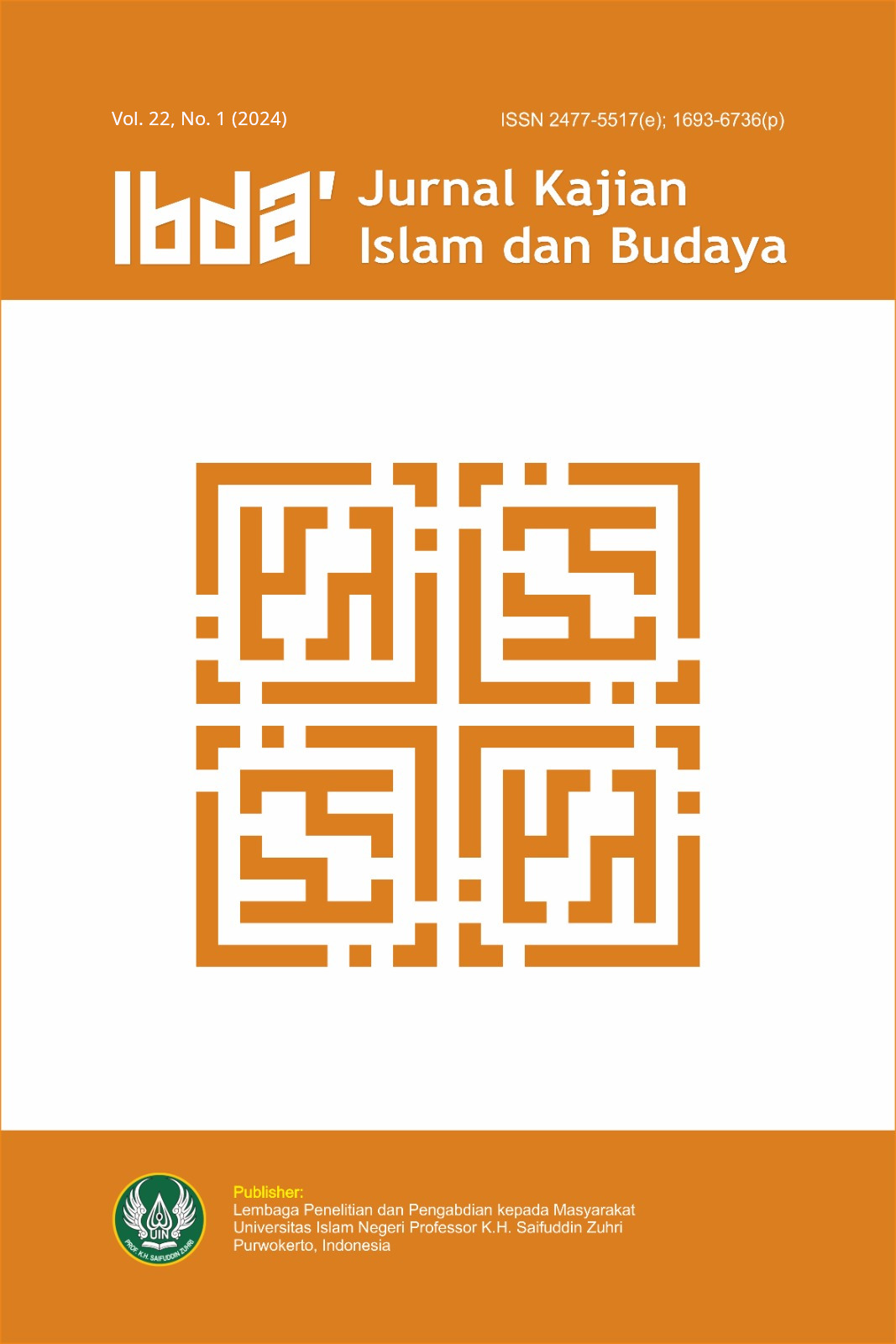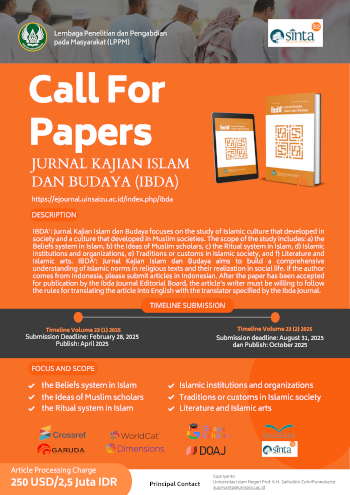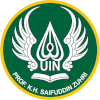Controversy and Voluntarism Among the Elite: An Ethnographic Study of the Sufi Community in Cibingbin, Indonesia
DOI:
https://doi.org/10.24090/ibda.v22i1.10064Keywords:
controversy, voluntarism, sufi, community, public spacesAbstract
This article explores the intricate dynamics among Sufi elites in Cibingbin, highlighting the significant tensions within this distinctive group. The Sufi community is deeply divided, engaging in intense debates and frequent confrontations with each other. Central to these disputes are issues surrounding the Nasab dialectics, an ideology associated with the habaib that stresses the concept of voluntarism among the Sufi elite. These internal debates are most intense between the habaib faction, known as Kanzus Sholawat Cibingbin, and the local religious authorities, referred to as Kyai Kampung. As each group digs in and solidifies their doctrinal positions, the struggle for dominance in the public sphere becomes more pronounced. This phenomenon, which aligns with Habermas's theories regarding the legitimacy of power in public spaces, has unexpectedly fueled the momentum of the Laskar Walisongo movement. Despite the apparent weakening of the habaib's defensive stance, both the habaib and the Kyai Kampung have maintained considerable local influence. The ongoing power struggle highlights the complex interplay between belief, influence and control within this segment of the Sufi community. Ultimately, they have made public spaces an arena not just for collective imagery, but also the most vital part of the organisation’s sustainability or spirit.Downloads
References
Admin. 2024. “Nasib Tragis Ba Alawi di Nusantara dan Pemetaan Para Pendukungnya (Termasuk Gus Rumail Abas).” RMINU Banten. Retrieved (https://rminubanten.or.id/nasib-tragis-ba-alawi-di-nusantara-dan-pemetaan-para-pendukungnya-termasuk-gus-rumail-abas/).
Alatas, Ismail Fajrie. 2021. What Is Religious Authority?
Asadnezhad, Ali, Nahid Kordi, and Ali Jafari. 2021. “Investigating the Management of the Formation of Habermas Public Sphere Theory in Instagram and Telegram Networks.” Propósitos y Representaciones 8(SPE3). doi: 10.20511/pyr2021.v9nspe3.1115.
Bottomore, Tom. 2006. Elites and Society.
Bowman, James S., and Glenn D. Paige. 1979. “The Scientific Study of Political Leadership.” The Academy of Management Review 4(2). doi: 10.2307/257793.
Cris Shore & Stephen Nugent (eds). 2002. "Introduction: Towards an Anthropology of Elites”, Dalam Cris Shore & Stephen Nugent (Eds), Elite Cultures: Anthropological Perspectives. London & New York: Routledge.
Devriésère, Viviane. 2020. “The Controversy.” Revista Electronica Interuniversitaria de Formacion Del Profesorado 23(1). doi: 10.6018/REIFOP.408751.
Efendi, David. 2017. The Decline Bourgeoise: Runtuhnya Kelompok Dagang Pribumi Kotagede XVII-XX. Vol. Cetakan 1. 1st ed. Yogyakarta: Penerbit Simpang.
Gardiner, Michael E. 2004. “‘Wild Public and Grotesque Symposiums: Habermas and Bakhtin on Dialogue, Everyday Life and the Public Sphere’, The Sociological Review.” The Sociological Review 52, No. 1 1. doi: https://doi.org/10.1111/j.1467-954X.2004.00472.x.
Geertz, Clifford. 1960. The Religion of Java. Illinois: The Free Press of Glencoe.
Haryanto. 2022. “BOOK REVIEW: What Is Religious Authority?: Cultivating Islamic Communities in Indonesia, by Ismail Fajrie Alatas.” Contemporary Southeast Asia 44(2):342–44.
Hidayah, Sita. 2012. “Antropologi Digital dan Hiperteks: Sebuah Pembahasan Awal.” Antropologi 2(1).
Johnson, Pauline. 2020. “The Structural Transformation of the Public Sphere.” in Habermas.
Kozinets V, Robert. 2013. “Netnography: Redefined.” in Netnography: Redefined.
Prince, William, and Jaclyn Piatak. 2023. “By the Volunteer, For the Volunteer: Volunteer Perspectives of Management Across Levels of Satisfaction.” Nonprofit and Voluntary Sector Quarterly 52(5). doi: 10.1177/08997640221127974.
Spreadley, James. 1980. Participant Observation. New York: Rinehart and Winsto.
Suzzan Keller. 1995. Penguasa dan Kelompok Elite. Jakarta: PT. Raja Grafindo Persada.
Usman, Imaduddin. 2024. Al-Fikrah Al-Nahdliyyah Fi Usul Wa Al-Furu’ Ahl Sunnah Wal-Jamaah. Maktabah Nahdatul Ulum Banten.
Wilson, Angie D., Anthony J. Onwuegbuzie, and La Shondra P. Manning. 2016. “Using Paired Depth Interviews to Collect Qualitative Data.” Qualitative Report 21(9). doi: 10.46743/2160-3715/2016.2166.
Downloads
Published
How to Cite
Issue
Section
License
Copyright (c) 2024 Ayub Wahyudin, Noval Maliki, Hilyatul Auliya, Raharjo Raharjo, Najahan Musyafak, Mohammad Fahmi bin Abdul Hamid, Muhammad Nurkhanif

This work is licensed under a Creative Commons Attribution-ShareAlike 4.0 International License.
Authors who publish with this journal agree to the following terms:
- Authors retain copyright and grant the journal right of first publication with the work simultaneously licensed under a Creative Commons Attribution-ShareAlike License a that allows others to share the work with an acknowledgement of the work's authorship and initial publication in this journal.
- Authors are able to enter into separate, additional contractual arrangements for the non-exclusive distribution of the journal's published version of the work (e.g., post it to an institutional repository or publish it in a book), with an acknowledgment of its initial publication in this journal.
- Authors are permitted and encouraged to post their work online (e.g., in institutional repositories or on their website) before and during the submission process, as it can lead to productive exchanges, as well as earlier and greater citation of published work (See The Effect of Open Access).
















